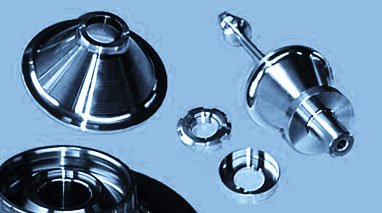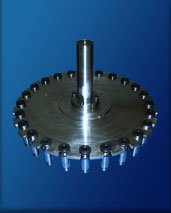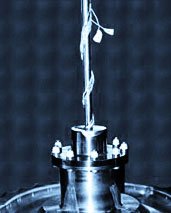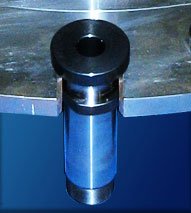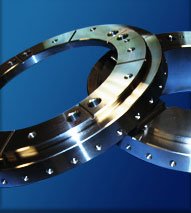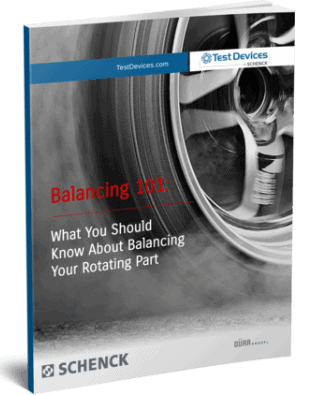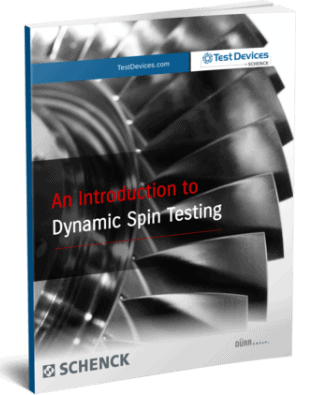Tooling & Arbors
The Issue
The tooling used in spin testing a rotating device is subject to the same speed-induced stresses as the device under test (DUT) itself. Therefore, the tooling must meet at least the same performance specification as the customer’s part being tested. Perhaps the worst possible outcome of a spin test is failure of the spin tooling which results in damage to the component under test. For instance, if tooling fails during a long duration low cycle fatigue test, the test component lost could be worth several hundred thousand dollars. Additionally, the component life is not established.
Download Our Spin Testing Ebook
Why It Matters
The act of holding a DUT affects the internal stresses of the part. As a result, a key challenge in designing spin test tooling is to safely control the DUT while not significantly entering into and affecting the test results. While the design requirements of tooling do not vary substantially from industry to industry, their safe and effective application entails advanced knowledge and unique approaches for specific DUT’s and kinds of tests.
What You Can Do
Test Devices creates tooling for spin testing that mimics, as closely as possible, the manner in which the part is held and the stresses it is subjected to in actual operating conditions. This ensures that the test results are in line with real world conditions. Test Devices engineers use Solid Works three dimensional modeling software to design tooling, and analyze the fits and stresses of the design with Cosmos analysis software. Additionally, the rotordynamics of the complete test assembly (component, tooling and spindle) are reviewed with XLRotor software.
Our arbor designs range from routine to extremely complex and are available to our customers regardless of test location or equipment type. Customers can use the tooling at our facility or at their facility on their own equipment.
Download Our Spin Testing Ebook
Considerations in Tooling Design
Specialized Capabilities
Test Devices specializes in high-speed rotational testing and has developed robust in-house capability for all the tooling used in rotational tests. Why is this specialized capability important? The failure of a spin arbor results in additional costs to replace damaged spin tooling and test equipment, as well as costs to repeat the test. Worse yet, it results in the loss of an expensive and perhaps irreplaceable prototype test article. Work with Test Devices and you can be confident that your spin test tooling is designed for the special challenges of high-speed rotational testing.
Temperature
In tooling design, temperature considerations fall into four major categories:
- Ambient (room temperature): Ambient temperatures allow the use of certain carbon steels that are the less costly and easier to machine than more exotic metals, although they may require a surface treatment to prevent premature failure from the effects of corrosion.
- Elevated Temp (400° to 800°F): All materials weaken as temperatures rise, so tooling for elevated temperature tests requires higher strength materials, such as stainless steel, which are more difficult to machine and usually require heat treating.
- High Temp (> 800°F): High temperature applications typically require super alloys, such as Inconels, which are very expensive, much more difficult and time consuming to machine and often require special ceramic machining bits and heat treatment procedures.
- Cold Temp (< 30°F): Cold temperature spin tests require materials with transition temperatures lower than the test temperature. Parts can grow as much as 1/8″ in diameter during testing and the loss in ductility below the transition point can cause cracks to grow quickly and cause a part (or tool) to burst during testing. Further, each material has different cryogenic properties.
Grip
Grip describes the manner in which a DUT is held in place during testing. DUT’s can be clamped sandwich style, held around a feature either internally or externally, or bolted. Each grip type has specific advantages and disadvantages according to the material properties, complexity of the DUT and the type of test being performed.
Tolerances
The machined tolerances of a DUT play an important role in the design, performance and cost of spin test tooling. A loosely toleranced part requires the arbor dimensions to be more customized to ensure axis alignment and proper gripping.
Coatings
Test Devices has developed special sacrificial coatings for use on production tooling where the interference fits can alter through wear. Such coatings can maintain the precision without the expense of new replacement tooling.
Damping
Sometimes it is not possible to design around a particular vibration problem due to configuration, environment or other factors. When confronted with an irresolvable prediction, Test Devices attempts to dampen the tool assembly to reduce the amount of resonance.
Assembly
When designing a preload assembly to minimize vibration, it is important to consider how to hold the assembly during torquing without damaging the arbor or part. Depending on the actual configuration and magnitude of the torque, Test Devices can include features in the arbor design for holding, or create more complex torque reaction tooling when large torques are required.
Materials
All materials for spin tooling must be of “rotational” quality, free of all flaws and should have been inspected and certified prior to machining. Not all vendors are able to supply appropriate materials.
Balancing
Before spin testing, each assembly must be balanced to ensure that the test speed can be achieved without undue vibration. The tooling must be designed with two journal surfaces for mounting into a balance machine. These surfaces must be highly precise (concentricities within 0.0002 inches TIR) to prevent wobble during the balance process.
Hollow Arbors
In order to instrument a rotor during the actual test, Test Devices can design and machine holes up through both the arbor and spindle. These holes accommodate the sensor wires leading from the DUT to a motion translation box called a Slip Ring.





